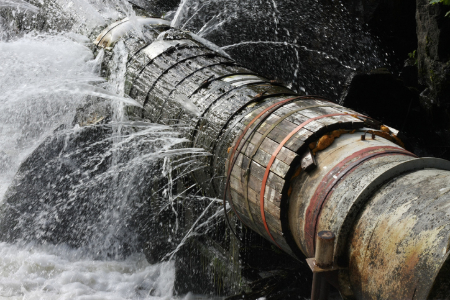Are Your KPI Solutions Really Fixes That Fail?
by Stacey BarrIf you try to improve a KPI with a quick fix, you’re likely going to make performance much worse, rather than any better.

A waste levy was recently introduced by our state government, of $75 per tonne of waste disposed to landfill. The intention was good: to encourage more recycling and reuse, and to deter the easier option of dumping all waste into landfill. They probably want to improve their KPI of Tonnes of Waste to Landfill. But the implementation wasn’t so good.
The overall cost to society has likely risen. It isn’t just the levy cost to residents and businesses who have more than a tonne of waste to get rid of. There are costs that are both hidden and ignored from the
consequences of implementing the levy:
- Because each vehicle entering the waste management facility needs to be weighed and checked, the throughput rate slowed way down.
- So queues built up, backing out onto the main road and blocking traffic.
- Traffic controllers were hired to manage this.
- And when the backed-up queues got too long, the facility was closed to avoid traffic accidents.
- The facility staff and traffic controllers were having to take flack from people about the long waits.
- And then there is the queue to be weighed and to pay as you exit the facility.
- Everyone waits and sacrifices much more time, even though most vehicles are not carrying anywhere near one tonne of waste for landfill.
- And there will be the people who just won’t wait, and possibly increase the problem of illegal dumping of rubbish in local bushland.
Like I mentioned before, the intention was good. But too often when we want to improve the performance of a KPI, we forget that the world is an interdependent system. No KPI behaves in a vacuum. Maybe this is why McKinsey, in one of their recent global surveys, discovered that not even 75% of transformations are very successful.
McKinsey say that communicating, actively leading, empowering employees, and encouraging continuous improvement make the difference. But I reckon, especially in light of the above example, they’ve forgotten something critical: systems thinking.
Systems thinking is about understanding how everything is interconnected in complex and dynamic ways. Nothing can change without ripples that trigger other changes. In the systems thinking theory there is an archetype called Fixes that Fail, which describes just one of many typical dynamic patterns that change ripples can trigger. In Fixes that Fail, a solution is targeted at a symptom, but has unintended or unexpected consequences which can, in turn, exacerbate the original problem or create new ones. From systems-thinking.org:
“Since you can never do just one thing, as everything affects everything else, before taking action to change the current state, think about what else that action is apt to affect. And, what affect with the affect will have.”
The waste management facility levy is an example of a fix that failed. The levy is a fix that treats the symptom of recyclable or reusable waste being irresponsibly dumped into landfill. But the consequences of the levy are simply more problems, possibly including even more irresponsible dumping of rubbish. Levies are like any other form of behaviour control: they drive behaviour that focuses on the numbers, not the desired result.
To avoid fixes that fail, the root cause has to be the target of the solution, as thesystemsthinker.com advises:
“Breaking the ‘Fixes that Fail’ cycle usually requires two actions: acknowledging up front that the fix is merely alleviating a symptom, and making a commitment to solve the real problem now. Launching a two-pronged attack of applying the fix and planning out the fundamental solution will help ensure that you don’t get caught in a perpetual cycle of solving yesterday’s ‘solutions.'”
The highest leverage solutions are fundamental performance improvements, not quick fixes. And one of the best ways to find the fundamental performance improvements (in addition to McKinsey’s advice about communicating better, leading better, empowering people and focusing on continuous improvement) is to use three types of mapping to explore the ripples of impacts that are most likely when you target improvement in a particular KPI:
- Map the business process, from end to end, that the KPI is measuring, and identify process measures that help you measure the down-stream effects of potential fixes.
- Map the relationships between the important performance results for your organisation, so you can see the conflict relationships that are clues about consequences of potential fixes.
- Learn how to map systems archetype diagrams that depict the dynamic that different potential fixes might create.
Quick fixes that treat symptoms, not causes, create longer term unintended consequences. And we find ourselves creating more problems that are more costly to fix than a fundamental solution to the original problem.
A fix focused on a symptom is a fix that will fail. Improve KPIs through systems thinking instead.
[tweet this]
DISCUSSION:
Do you have any examples to share, of fixes that failed in your organisation?
Connect with Stacey
Haven’t found what you’re looking for? Want more information? Fill out the form below and I’ll get in touch with you as soon as possible.
167 Eagle Street,
Brisbane Qld 4000,
Australia
ACN: 129953635
Director: Stacey Barr




